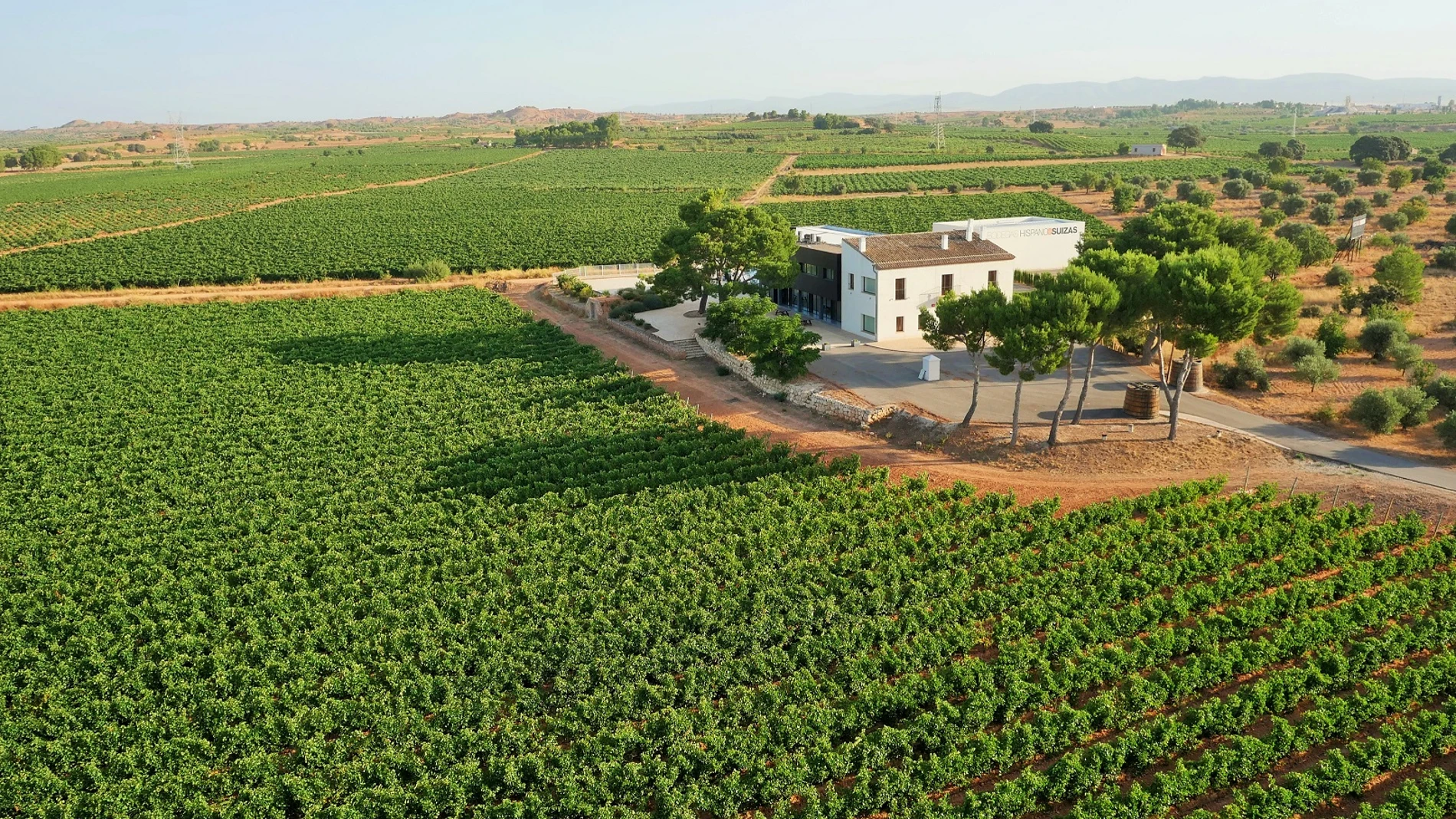Production is limited to 4,000 hectares in the municipality of Requena, an area with more than 40 years of experience and tradition in cava production.
Although there are signs of small quasi-experimental productions at the dawn of the 20th century, it was not until 1982 that the first 'commercial' cavas were produced. In 2001 there were already seven producing bodegas, which were grouped together in the Asociación de Elaboradores de Cava de Requena (Association of Requena Cava Producers) to promote and guarantee quality standards. In addition to the seven cava-producing bodegas, Requena has a further 16 bodegas producing base wines, with a total surface area of 18,000 hectares of vineyards.
The high altitude above sea level, the continental microclimate with Mediterranean connotations and the great thermal contrast between day and night make the 4,000 hectares of vineyards in the municipality of Requena a paradise for growing grapes for the production of cavas, especially the white grape varieties Macabeo and Chardonnay and the red varieties Garnacha and Pinot Noir.
The Macabeo grape variety is the main grape variety in Requena, although Chardonnay, Garnacha, Pinot Noir and, to a lesser extent, Xarel.lo and Parellada are also grown. Due to the climatic characteristics of the area, the cultivation of organic crops is growing significantly year after year, being, in percentage terms, the main sub-region in the state in the production of organic cavas.
The Asociación de Elaboradores de Cava de Requena is a group formed by the seven wineries based in Requena: Coviñas, Chozas Carrascal, Dominio de la Vega, Hispano+Suizas, Pago de Tharsys, Torre Oria and Unión Vinícola del Este, accredited by the Regulatory Board to produce sparkling wines with secondary fermentation in the bottle under the label Cavas de Requena. On the first weekend of December, the Cava Toast is held on an awaraness day, which officially kicks off the Christmas season.




